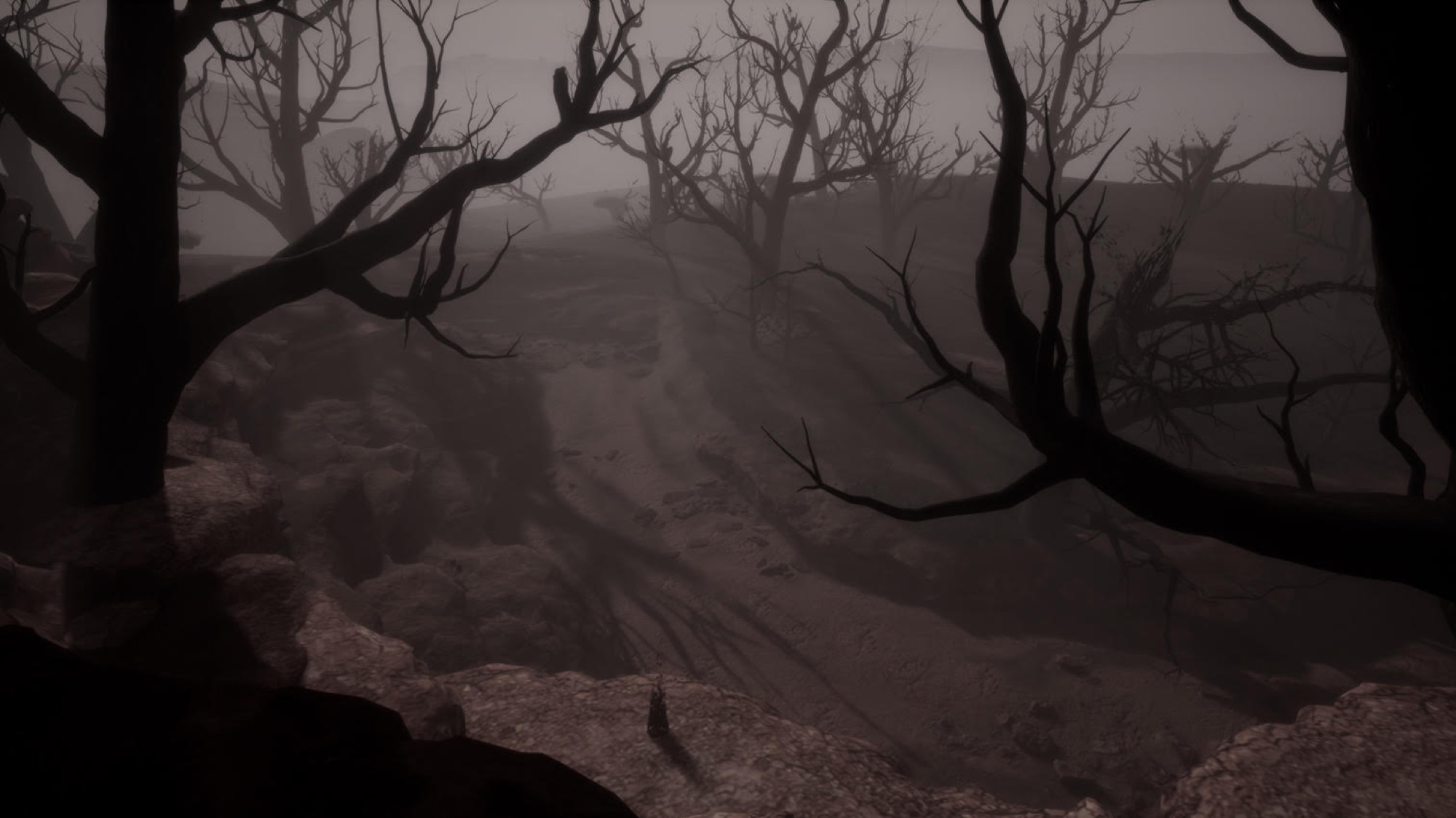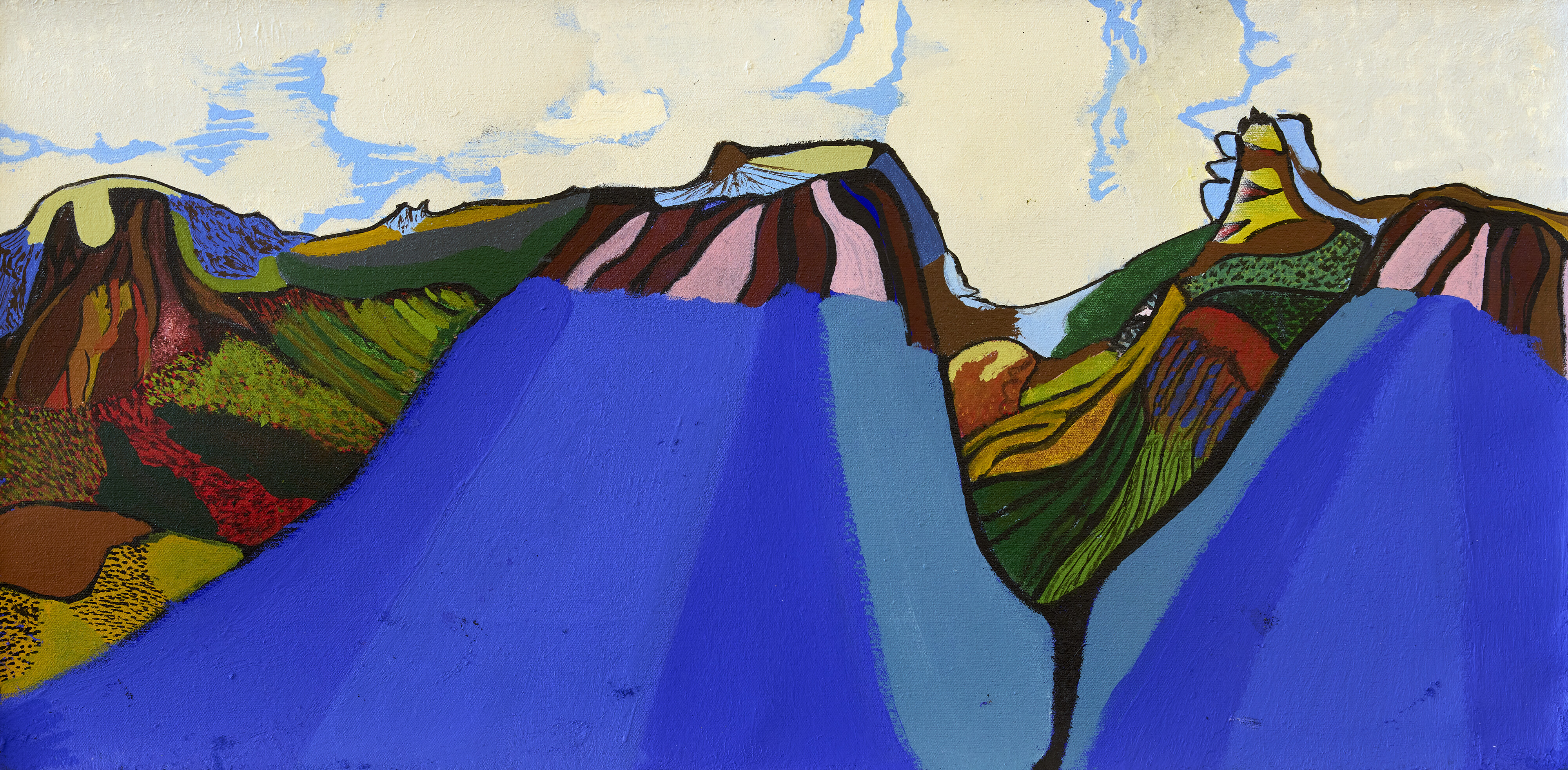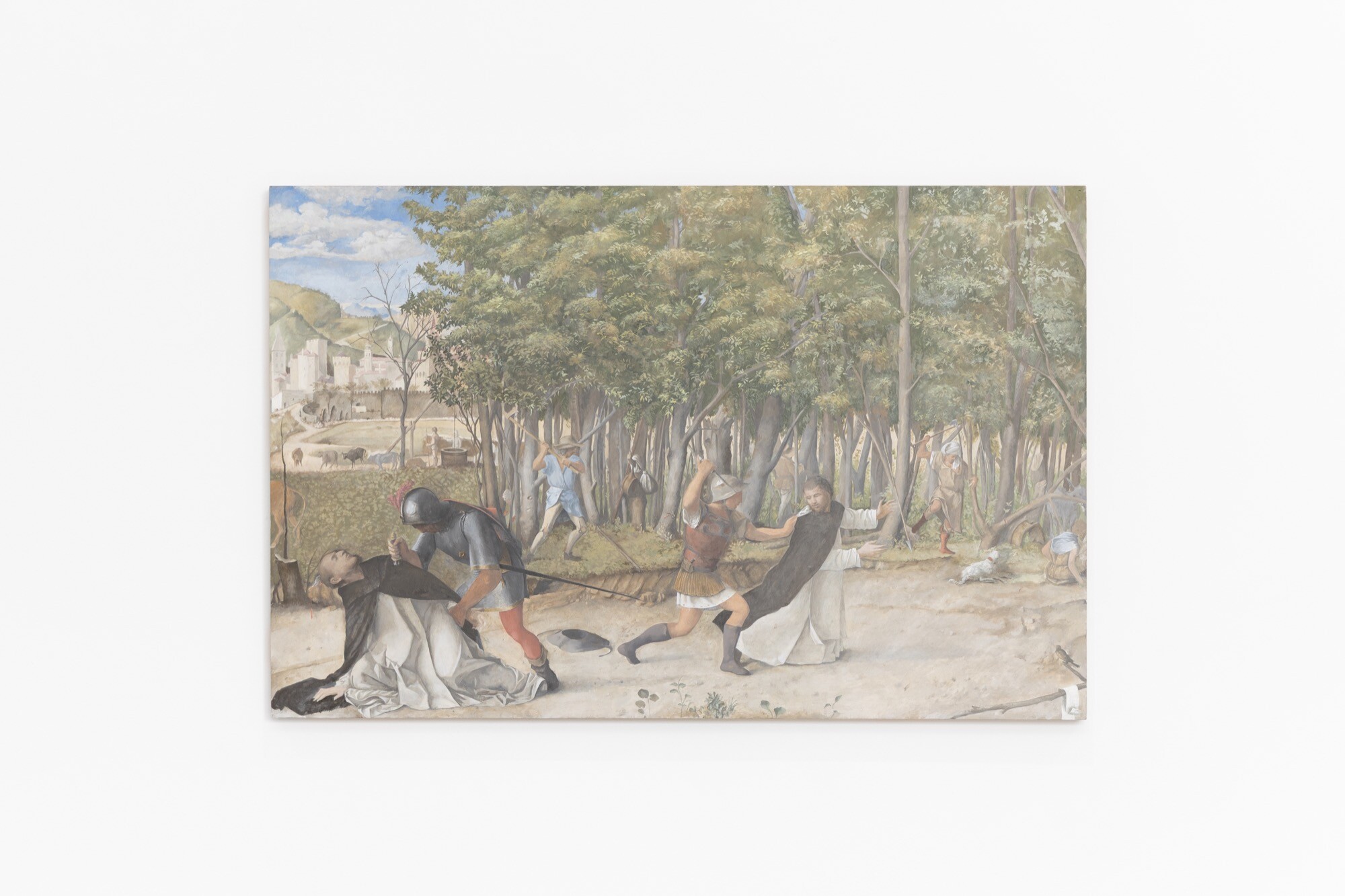Christian Thompson: Baya Gardiya
Philip Brophy
I am ACMI.
I'm here to see Christian Thompson's newly commissioned VR work at ACMI. As the attendant places the VR headset on my cranium, he asks me to check that the rig is working by acknowledging that I can see the ACMI logo on the screen. Instead of a 'welcome to country' acknowledgement, I'm saddled with a marketed brand on my eyes, which I must acknowledge before the attendant can press play.
I peer at the white letters, slightly pixelated and blurred as per VR's stereoscopic imaging screened so close to the retina: it's always like you've put on someone else's prescription lenses by mistake. As I'm looking at the bland capitalized font hovering in the black void, I feel like I'm being forced to see the world as ACMI does. I'm reminded yet again of how cultural institutions of all kinds insist on announcing their presence, their legacy, their relevance and their importance in whatever 'world' which they profess to either belong to or construct. For ACMI, it's the culture of the so-called 'moving image': a quagmire of museographic spectacles, pseudo-cinema installations, televisual couch-criticism, constructed interactive experiences, kiddie-friendly events and corporate-aligned ethno-cine festivals. And they're all heavily branded and promoted as if ACMI itself created the moving image. The silent logo in front of me confirms this ongoing strategy.
I start my discourse on Christian's VR—Bayi Gardiya (Singing Desert)—by positioning the visualized ocular sensation of VR next to the invisible cultural framing provided by ACMI. If ACMI insists on calling such attention to itself, so be it. But this review wishes to distinguish Christian's embedded artistic practice from ACMI's enmeshing ideological manoeuvres.

I am Bidjara.
And so, after ACMI welcomes me, Christian welcomes me. Not in person, but in voice. Bayi Gardiya is essentially a pop music video: the audio is a song composed and performed by Christian; the visuals are subcontracted to a 'creative technology studio' (to be discussed shortly). Contemporary art has long flirted with pop music—mostly through patronizing, flippant or desultory glances and shimmies (Pipilloti Rist, Candice Breitz, Phil Collins, Ragnar Kjartansson, Susan Philipsz, the list is long). Unlike such examples where the artist performs as an anthropologist curating and auditing the pop consumer, Bayi Gardiya features Christian himself as an auralized anthropological object resulting from his creative process as a pop producer.
Just as museographic objects signify their material presence through contextual absence, the non-diegetic off-screen voice of Christian instates his visual absence as a powerful acousmatic presence. Christian performs as his own ghost, fixed with feet firmly on his home ground of Bidjara country near Barcaldine, central western Queensland. We see what he sees/saw, feels/felt, imagines/imagined. The song title 'Singing Desert' orients us to consider Christian's singing as a mediumistic transference of land to voice. It's an intriguing and engaging twist on 'songline' hermeneutics: where Indigenous painting explores the polytemporal expanse of creationist lineage through oral transmission (yes, I'm making it sound overly conceptual because it is), Bayi Gardiya demonstrates how Christian's voice—rather than his hand—evokes sited land in the headphone's stereophonic space.

I am Christian.
Christian's institutional survey show at MUMA (Ritual Intimacy, 2017) was a great opportunity to perceive a web of interconnecting lines across over a decade of his artworks. Most interestingly, its museographic framing clarified the 'problem' of Christian. His self-image plastered throughout the numerous spaces, walls and screens superficially paid lip service to the chauvinistic lineage of artists 'arting themselves' through half-conceptual/half-aesthetic self-portraiture. As if to justify this, the exhibition's didactics laboured key points about Christian's Indigeneity, lineage, family, childhood, etc., as if to say that Christian's performed self-identity was warranted due to his responsibility as a contemporary Indigenous artist. This rhetoric has followed him continually, as it does all indigenous artists.
But as I walked around MUMA, I saw Christian as a kid pretending he had released a bunch of records, and the images were album covers, publicity photos, marketing tie-ins and commissioned magazine spreads. I saw the numerous Christians as a powerful queering of the chauvinistic artist: less Joseph Beuys staring blankly into a Nikon lens and more Boy George staring into a photo booth flash. Most contemporary art in the Popist vein can be dismissed as poor attempts to appear like album-cover artwork. Christian's oeuvre doesn't reference that terrain: he lives within its imaginary parallel world while inhabiting the professional channels of 'contemporary art'. Seen in this perspective, his theatricalized and performed self-identity queers its place by appearing to be art while residing in Pop. Bayi Gardiya is a wonderfully apt sign of this positioning—even if it remains unacknowledged and potentially muffled by its very production.

I am Nakatomi.
Despite Bayi Gardiya being a commissioned contribution to 'screen culture', its visualization is its most limiting and unexciting feature. Produced by the Sydney self-described “innovation, venture and post-production driven company” Nakatomi, the visuals are formed as a stereoscopic linear experience: one is placed within a spherical dome so that one can stand still and tilt one's head around to perceive an inverted 'in-the-round' set design that reconstructs the actual terrain of Christian's homeland as concentric rows of slightly bowed and curved cut-out images of trees, rocks, sand and sky. As with the affective logic of VR, you aren't ever 'immersed' (unless you possess the limited scopic acuity of a 5 year old), but instead you are placed in an ornate pseudo-phantasmagorical encompassing panorama. It's mostly like inhabiting a slightly expanded 'pop-up book' where each page turn opens up the pre-designed staging and faux-naif layering of foreground and background facades and props.
This is not a criticism of Bayi Gardiya'sVR design implementation. But it is an admonition for visitors to the world of VR to lose the Spielbergian-wonder schtick and critically observe the visual mechanics literally before one's eyes. Bayi Gardiya's visuals are a perfect counterpart to Christian's voice, which is multi-tracked in breathy refrains and melodic motifs in a patterned acapella fabric. Conceptually—even if my reading is entirely inappropriate despite its excitation—their opposition to each other continues Christian's multi-platformed queering.
In standard millennial practice of referencing blockbuster late-80s movies viewed as toddlers, Nakatomi takes its name from the fictional ruthless Japanese corporation in the first Die Hard movie (1988). Just as 'the art world' exhibits a low critical threshold when appraising electronic/digital audio-visual media technologies deployed in art settings, so too does the advertising industry demonstrate meagre comprehension when referencing or appropriating Japanese image-making. Bayi Gardiya's swirling transformation of geography, flora and atmosphere from day to night and season to season replays the Gaea CGI-overload of Avatar (2009)—which actually looks like 90s trance music videos OD-ing on Bryce fly-throughs, despite being influenced by landmark eco-fantasia anime like Nausicaa (1985) and Princess Mononoke (1996). Nakatomi's design thus conforms to industry standards of professionalism and expected displays of imagination. But that alone does not make it creative, innovative or critically engaging.
I am Australia.
ACMI—like Screen Australia—believes that fostering creativity, innovation, growth and projection within the hybrid industries of 'the moving image' is vital to our cultural development, impact, identity and longevity. And like all cultural institutions, it mouths these altruisms as if it is graciously bestowing audiences with noble acts of support and enlightenment. The harsh reality which its gilded marketing department ignores is the futile strategy of instigating 'creative teams' by marrying 'artists' with 'industry'.
Could we not for once be clear about this: Australia's 'moving image culture' is governed by the advertising industry. Every agency, every collective, every production facility, every post-production house, every design consortium, every management company—they amount to a mass of unimaginative copy-writers and image-producers whose 'infinite creativity' sits somewhere between splashing lights on the Sydney Opera House for dumb drunks, and making mums laugh at meerkats hawking overpriced insurance. Every time you connect an 'artist' to this realm, all it does is make the commissioning institution seem 'professionally aligned with an industry', and the lazy art community (curators and audiences alike) think that slick cinematography and off-the-shelf VFX make video art so much better.
Having said that, ACMI's commissions over the years have produced powerful works which hopefully will outlive the messy and implicating mechanics of their 'cultural industry' origins. The point is that there remains space to critique the bigger picture of their contemporaneity. As I turned my head up, down and around while listening to Christian's chorale in Bayi Gardiya, I gained a heightened sense of how invisible such cultural machinery remains in an era so obsessed with transparency.
Philip Brophy writes on art among other things.


